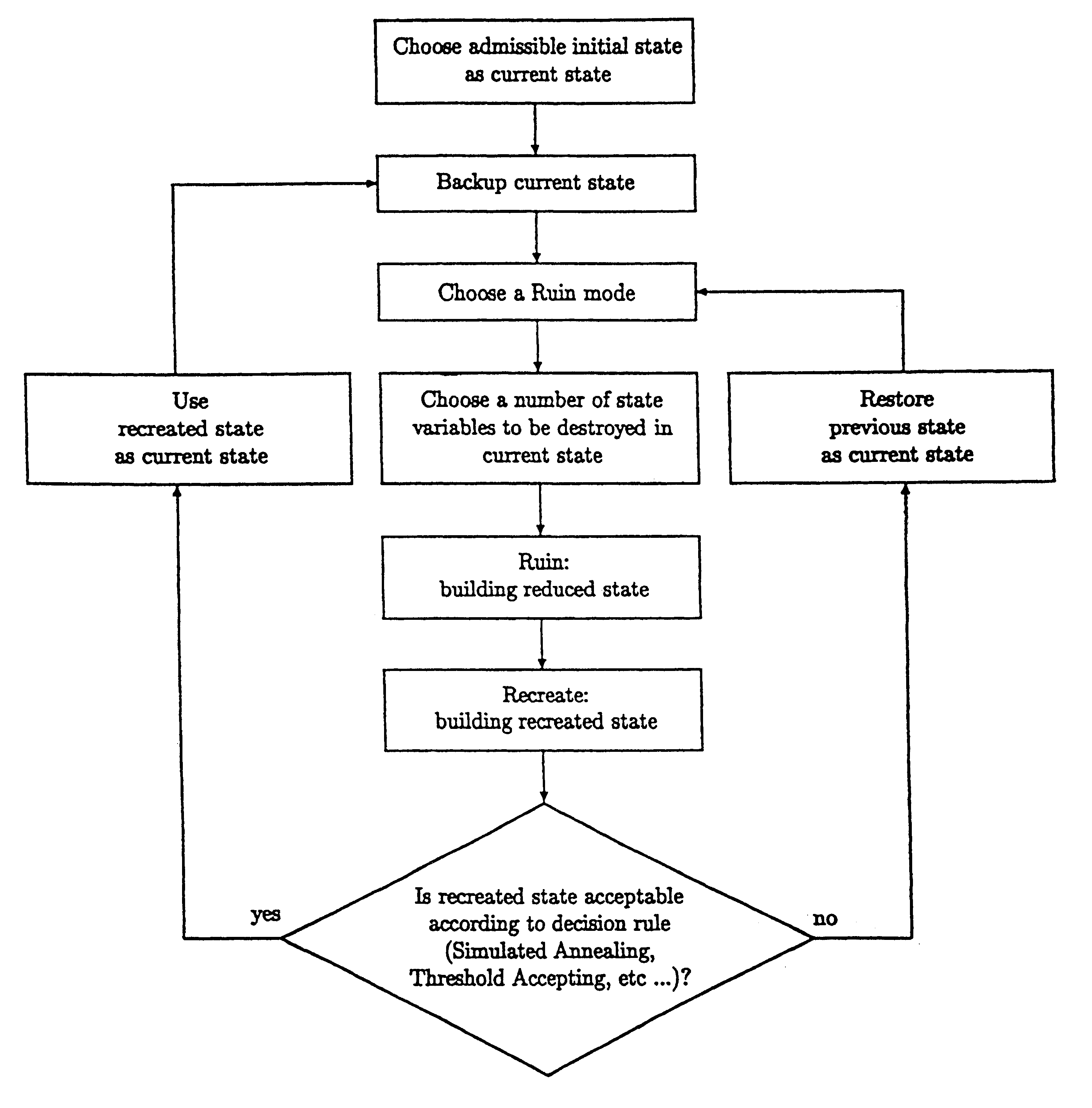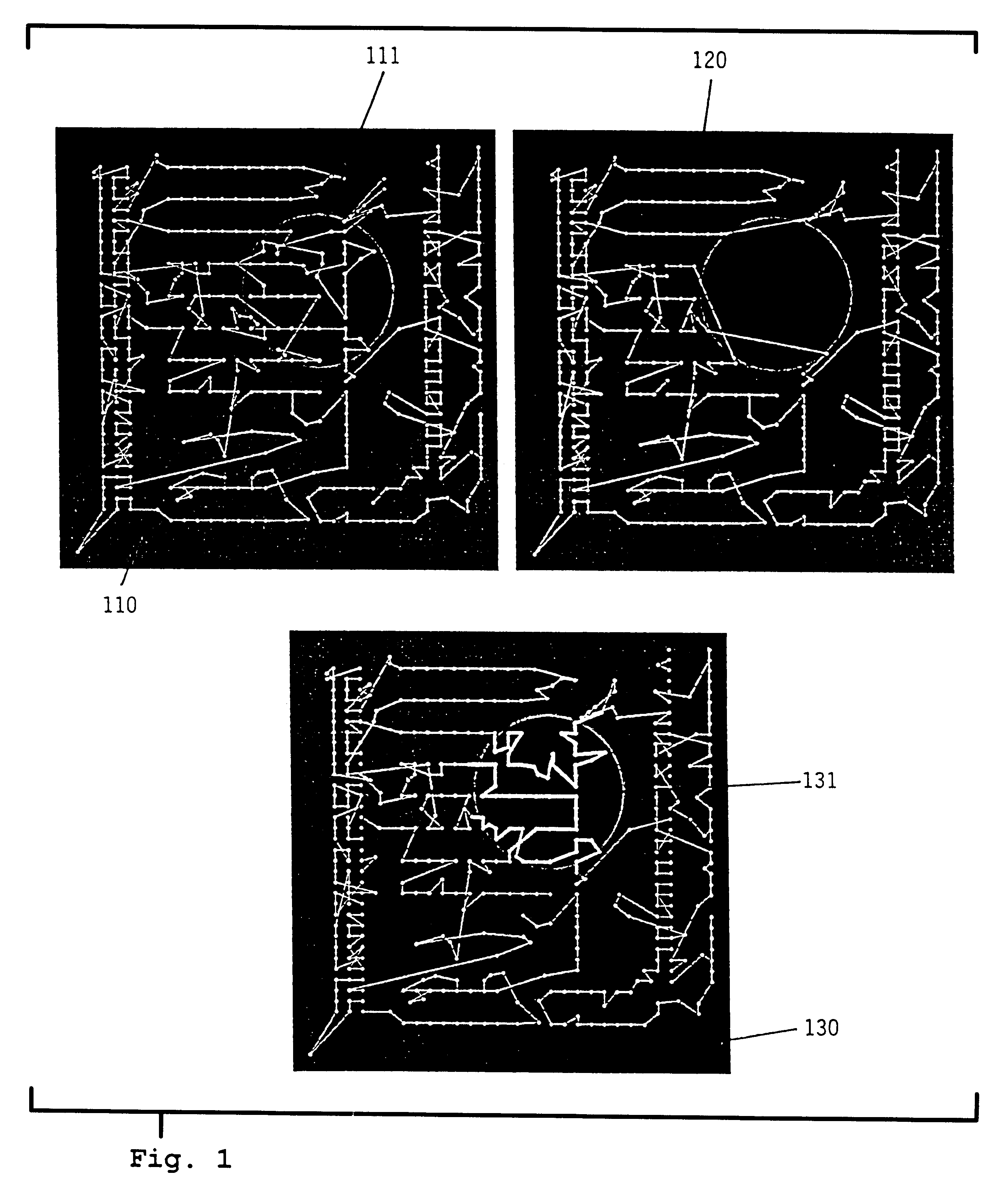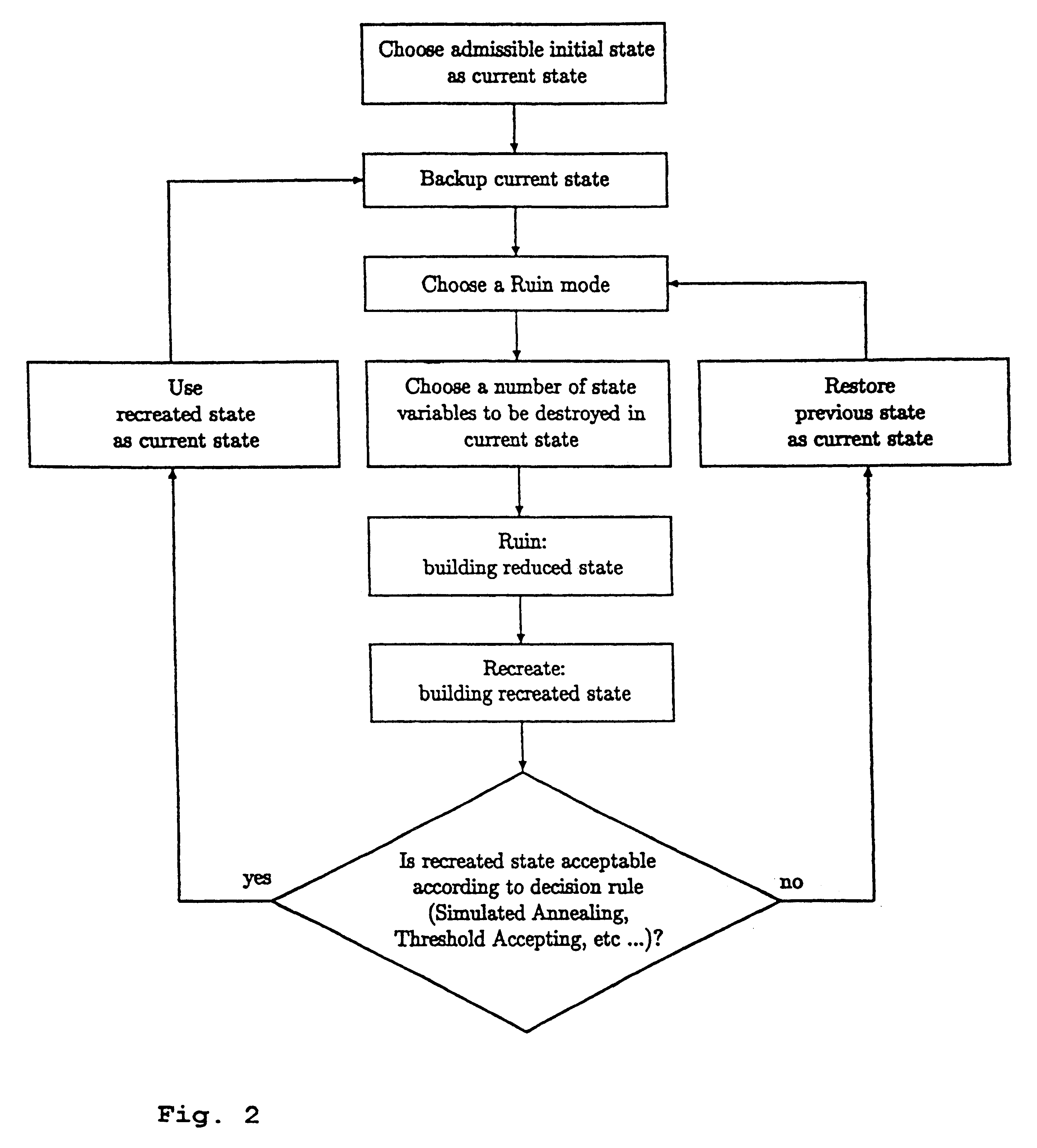Optimization with ruin recreate
- Summary
- Abstract
- Description
- Claims
- Application Information
AI Technical Summary
Benefits of technology
Problems solved by technology
Method used
Image
Examples
Embodiment Construction
If the current specification is referring to routing systems (in specific to transportation routing systems and communication networks), this does not limit the applicability of the proposed teaching to other technical systems.
4.1 A First Look at the Principle of Ruin & Recreate (R&R)
Before we give a more systematic introduction, we want to give the reader a quick feeling for this new class of algorithms we introduce here. The basic element of our idea is to obtain new optimization solutions by a considerable obstruction of an existing solution and a following rebuilding procedure. Let's look at a famous Traveling Salesman Problem (TSP) which was often considered in the literature (the PCB442 problem of Grotschel). Suppose we have found some roundtrip through all of the 442 cities like in the FIG. 1.
The top left part 110 is our initial or current solution of the problem showing a tour (the links) trough the various "cities" (the nodes). We destroy now a significant part, the area 11...
PUM
 Login to View More
Login to View More Abstract
Description
Claims
Application Information
 Login to View More
Login to View More - Generate Ideas
- Intellectual Property
- Life Sciences
- Materials
- Tech Scout
- Unparalleled Data Quality
- Higher Quality Content
- 60% Fewer Hallucinations
Browse by: Latest US Patents, China's latest patents, Technical Efficacy Thesaurus, Application Domain, Technology Topic, Popular Technical Reports.
© 2025 PatSnap. All rights reserved.Legal|Privacy policy|Modern Slavery Act Transparency Statement|Sitemap|About US| Contact US: help@patsnap.com



